Racing Point: by imitation only
Formula 1’s 70th birthday celebrations were overshadowed by a copy-cat row between Racing Point and a host of other teams. Mark Hughes looks at the far-reaching implications of the case
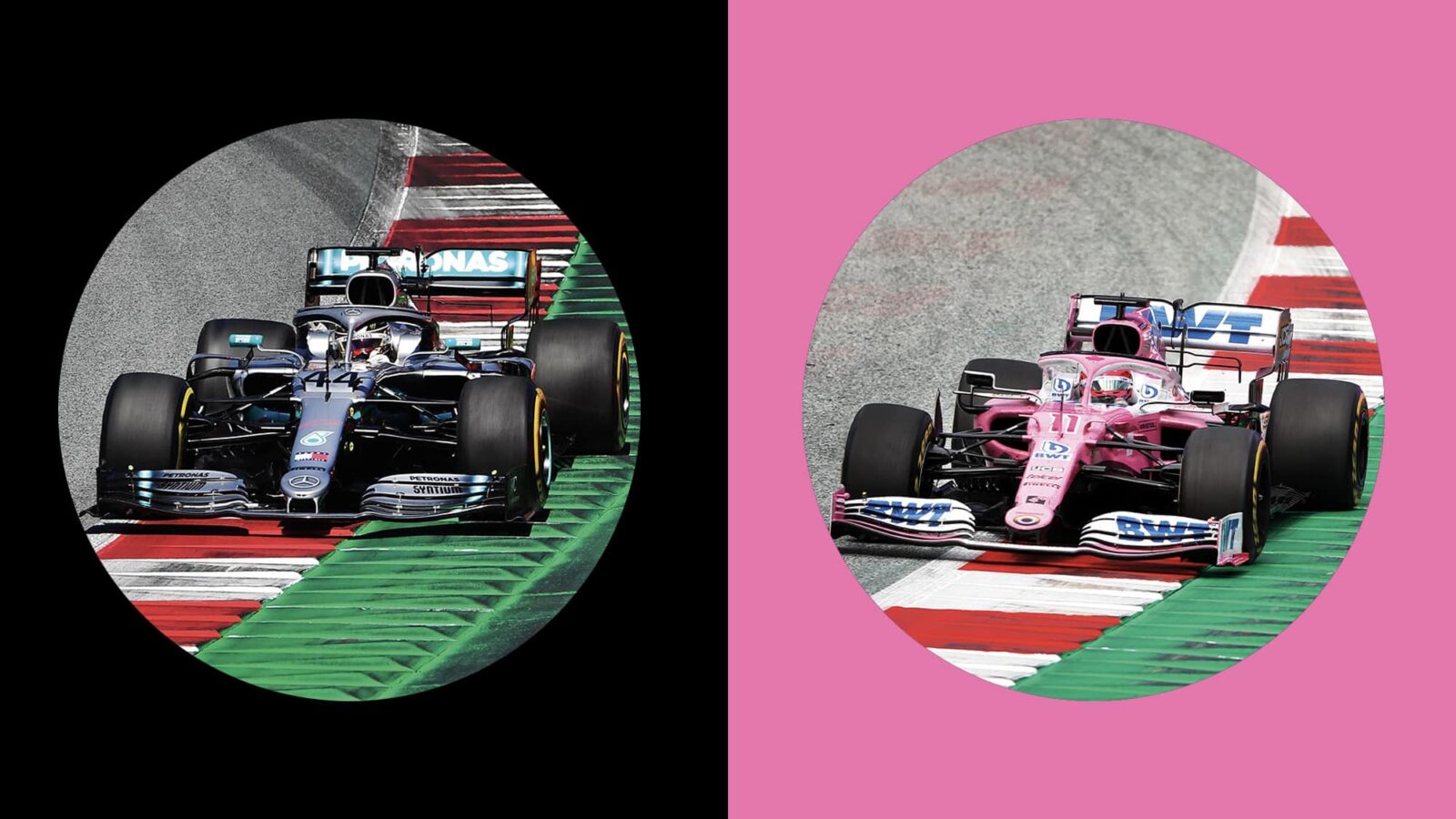
It was a 70th birthday party for the Formula 1 World Championship itself, but a fight broke out among the guests – a brawl, in fact, which involved more than half the grid.
It was all about what one of its members had been up to with another of them. It was perfectly innocent, insisted Mercedes and Racing Point. It was outrageous, indecent and undermined the whole basis of that world championship, insisted Renault, McLaren, Ferrari and Williams as they gave notice of appeal at the lenient penalty given by the FIA for the process by which the rear brake ducts of the Racing Point RP20 (aka the ‘pink Mercedes’) had been created. This car would go on to qualify third behind the two Mercedes at the birthday party event, just inflaming the whole situation.
“They claimed they had copied the car via photography,” said McLaren’s Zak Brown. “It’s clear from reading the [FIA] document that that is BS. So you have to question everything else around the car.”
“It’s BS to Zak Brown because he’s not an engineer,” retorted Racing Point’s CEO Otmar Szafnauer. “He’s got no idea what he’s talking about. Zero. And I’m surprised at how little he knows about the rules of F1. It seems to me he knows more about historic racing than he does about F1.”
Gosh; all seems a bit extreme for a brake duct, doesn’t it?
But behind an arcane query about brake ducts rests the future direction of the whole sport. Renault’s protest of the Racing Point’s ducts – originally made at the Styrian Grand Prix – actually relates to what does and does not constitute an F1 constructor. The ‘pink Mercedes’ has threatened to untangle that definition – and with it the whole commercial basis underlying F1.
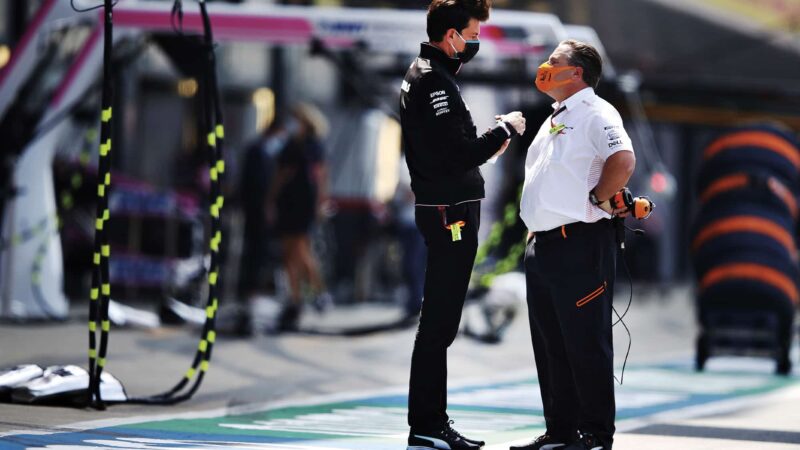
Zak Brown’s McLaren is one upset team, but has dropped its appeal. The team will run Mercedes engines next year
Getty Images
A new commercial agreement between F1 and the teams for the next five years was due to be signed just days after the FIA upheld Renault’s protest, but imposed a fairly light penalty ($400,000 per car and the loss of 15 championship points, while allowing the team to continue using the ducts). The timing was potentially disastrous, for if the implied possibility of customer cars by the back door was followed, then the commercial agreement was essentially obsolete before it had even been signed. Just as F1 is trying to keep itself viable amid the pandemic and its severe economic implications.
This wasn’t really about the ducts, which were merely the components chosen by Renault to pick the fight. It was attempting to disprove Racing Point’s contention that it had created its replica Mercedes by reverse- engineering from photographs (as the internals of a duct would not be revealed by a photograph). Copying another car is not specifically forbidden by the regulations – for it has never previously been considered feasible. Renault, McLaren, Ferrari and Williams believe it still isn’t, and that the RP20 could not possibly have been created without data transfer from Mercedes – which would definitely be illegal.
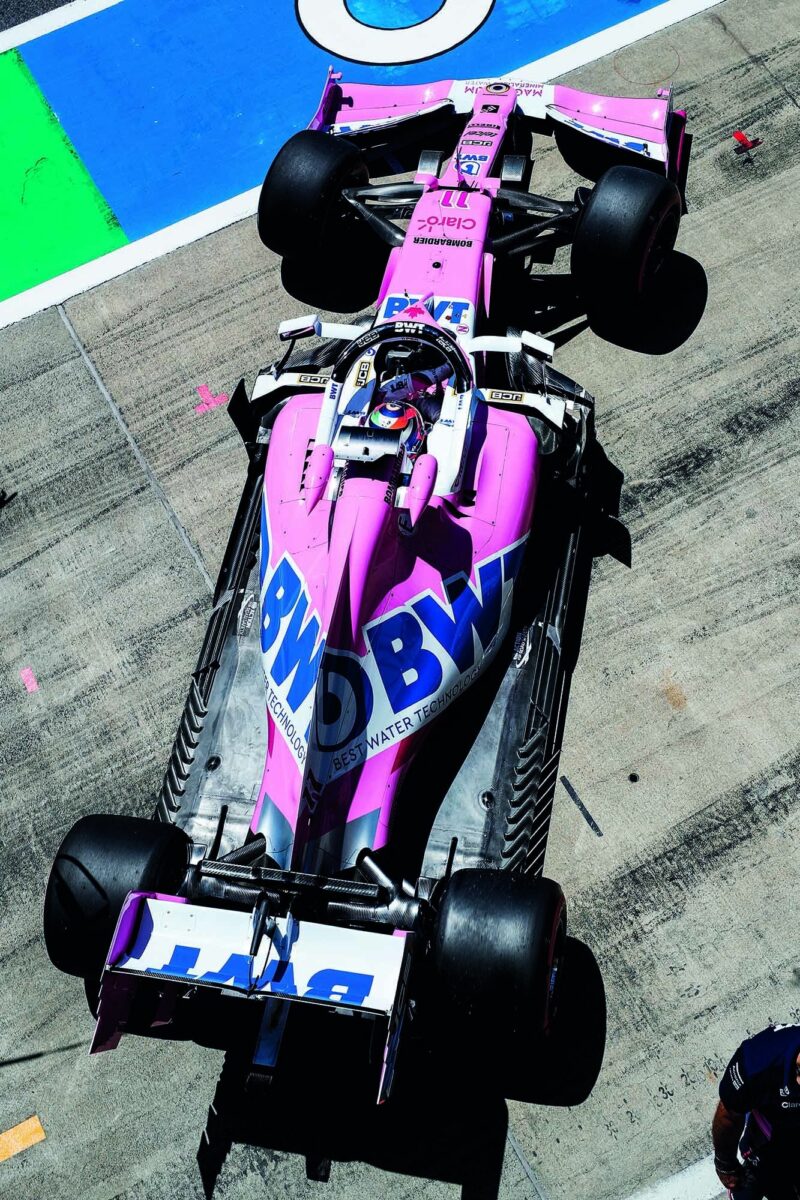
Running the rule across the entire car? Racing Point has taken reverse engineering from photos to ‘a whole new level’
DPPI
Customer cars used to be part of the fabric of F1. Stirling Moss’ victories in Rob Walker’s Coopers and Lotus from 1958-61 are legendary. Jo Siffert won the 1968 British Grand Prix in Walker’s Lotus 49. In 1969 Piers Courage finished second at Monaco and Watkins Glen in Frank Williams’ Brabham. A year later Jackie Stewart gave the March marque its first grand prix victory, but with the Tyrrell team. John Macdonald fielded the last of the customer cars in 1982, with a March for Emilio de Villota before the regulations demanded that entrants could only field designs created specifically by them (or for them by an outside third party, i.e. not another F1 team). Creating a competitive F1 car has become a vastly more complex business since those days. The resource required to do so has exponentially increased. The implication of a customer car now – and F1 has flirted with reintroducing the concept on and off – is more serious.
“If a customer car is faster, then it’s a threat to teams like Renault and McLaren”
If a precedent were set whereby any team could simply replicate a title-winning car and thereby plug itself into someone else’s resource and talent, which may have taken years and billions to create, then it should probably not be entitled to F1’s revenue share on the same (i.e. results) basis as the bona fide constructors with their R&D and heavy overheads. Worse than that, if that customer car is intrinsically faster than the cars of the other bona fide constructors, then it forms an existential threat to those teams. Why would Renault stay around, and how would McLaren or Williams survive long-term?
It’s a question that has vexed Renault’s non-executive director Alain Prost: “The FIA has to make a decision: is copying with the help of the outside legal or not? If it should be legal, we open the door to a dangerous situation,” he told Auto Motor und Sport. “The satellite teams can operate on a much lower budget, which gives them additional benefits in the budget-capping era because they can put money they saved by copying into other areas.
“When I bought Ligier in the ’90s, we were 65 people. That was possible because the Ligier was a disguised Benetton at the time. When I signed my first Concorde deal in 1997, I was forced to be a constructor and the basic features of the contract still apply today. If you do not meet this condition, you will not get any share of the commercial income. At that time, I had to move with my team from Magny-Cours to a new factory in Paris and expand my team to 250 people.”
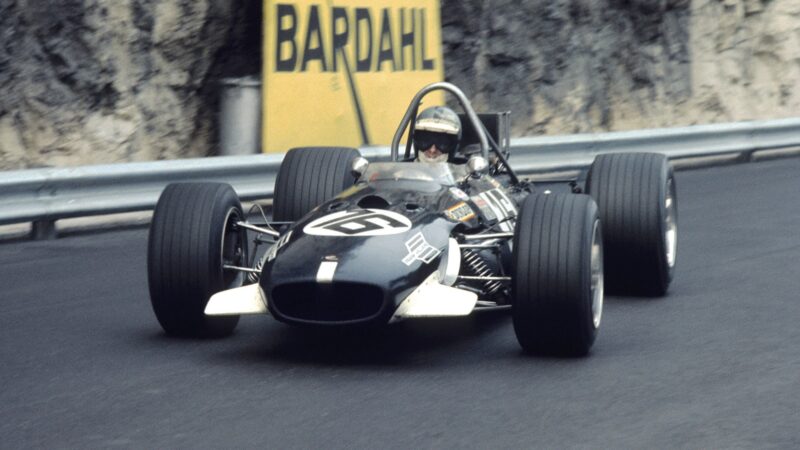
Piers Courage on his way to second in Monaco in a Brabham BT26A run by Frank Williams during 1969
Emmanuel Zurini / DPPI
Not even Racing Point denies that its 2020 car is a near-replica of last year’s title-winning Mercedes W10. That in itself does not break any regulation. But the process by which it was replicated would be illegal if any data was received from Mercedes aside from that relating to the ‘non-listed’ parts that Mercedes sells directly to Racing Point, such as the engine, transmission, suspension and – last year – the brake ducts.
With anything relating to the listed parts of the car – i.e. those which cannot be created by another team – there can be no data transfer. In between last season and this, brake ducts were added to the ‘listed parts’. Appendix 6 of the Sporting regulations insists: “A competitor shall, in respect of the Listed Parts to be used in its cars in Formula 1, only use Listed Parts which are designed by it.” (our bolding).
“Receiving CAD drawings in 2019 was OK; using them for a 2020 part was not”
In what sense has Racing Point ‘designed’ its brake ducts? That’s the technicality which is the nub of the case. The FIA verdict was that the process of ‘designing’ was followed, in that once you have used the part it’s in the DNA of the team; so long as you create your own drawings and follow the design process, you have designed it.
Last year Racing Point did indeed use the Mercedes W10 front brake duct. Therefore, that duct was now also in Racing Point’s DNA and it was permitted to ‘design’ it to comply with the reclassification of that part from non-listed to listed. This ruling made Renault’s attempt to prove the duct couldn’t have been created from photographs irrelevant.
But Racing Point had tripped up over the rear brake ducts because in that case they did not use those ducts on last year’s RP19 model.
In order to create the rear brake ducts for the RP20, Racing Point used the Mercedes CAD drawings it had legally received when it had bought them in 2019. Receiving the CAD drawings in 2019 was OK. Using them to create a part unique to the 2020 car was not.
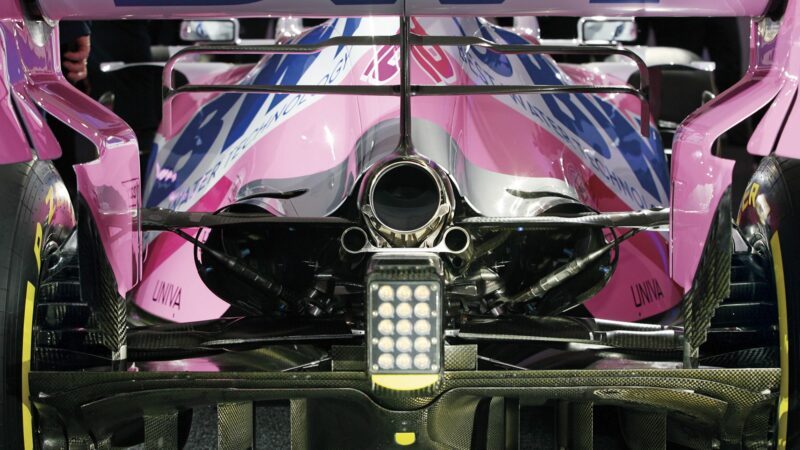
The FIA is keen to clamp down on this early, to avoid what could become a number of ‘customer car’ issues
Grand Prix Photo
The FIA clarified its position, saying: “If Racing Point had asked the FIA at the time if it could use the CAD models of the Mercedes W10 as the basis for the RP20’s rear brake ducts, the FIA would have said definitely not because (in contrast to the position with the front brake ducts) Racing Point was not refining a component that had already been incorporated into the DNA of the RP19. Instead, it was introducing a completely new component for the RP20 which it knew was classified as a listed part under the sporting regulations (because they had been issued on April 2019).”
Racing Point introduced the Merc W10 front brake ducts on last year’s car at the Spanish GP – shortly after notice was given that ducts would become reclassified in 2020. Getting them onto the RP19 was obviously so as to make them legal for the RP20. But it was impossible to do this with the rear brake ducts on the RP19 because that car’s wheel upright (which transitions into the brake duct) was different to that of the Mercedes W10.
This technicality was the FIA’s justification for Racing Point’s financial and points penalty. “I think that the FIA wanted to come up with a solution that lets everybody live,” said Mercedes’ Toto Wolff. “Racing Point is pretty upset and believe they have a strong case and have lawyers ready to go to appeal. On the other side, there is a group forming, a little revolution in every sense, trying to go after Racing Point, I guess because they’re upset they haven’t got the sort of performance Racing Point has.”
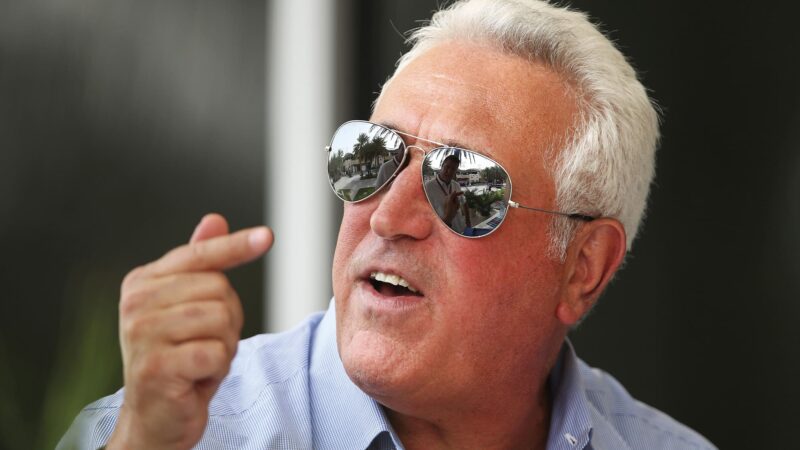
“Shocked and disappointed” Lawrence Stroll is determined to fight the case
Getty Images
The others may not believe it possible to create something as intricate, millimetre- perfect as a current F1 car just by studying photographs. They may insist it could only have been done by illegal data transfer. But they have no proof of that. Which doesn’t progress us any further.
The bigger question is whether this is a direction F1 (as in Liberty and the FIA) wishes to follow. It is not. It has applied a lenient penalty on a technicality probably because it realises it was partly at fault for the lack of clarity that has created this situation. But going forwards, it plans on making changes, as the FIA technical chief Nicholas Tombazis explained at Silverstone.
“People have been taking photos and sometimes reverse engineer them and make similar concepts, or in some areas identical concepts or close to identical. We don’t think this can stop in the future completely. But what we do think is Racing Point took this to another level.
“We don’t want 8-10 Mercedes copies, where the main skill is how well you copy”
“They clearly decided to apply this philosophy for the whole car by doing what I would call a paradigm shift – a disruption in the process that has been the norm in design in F1 cars in the last 40 years. One should not penalise them for that because they were original in deciding to follow this approach. “However, we do not think this is what F1
should become. We don’t want next to have eight or 10 copies of Mercedes on the grid, where the main skill becomes how you do this process. We do plan, with very short notice, to introduce some amendments to the 2021 sporting regulations that will prevent this from becoming the norm. It will prevent teams from using extensive parts of photos to copy whole portions of other cars in the way Racing Point has done. We will still accept individual components to be copied in local areas, but we don’t want the whole car to be fundamentally a copy of another car.”
This would seem to have resolved the ‘customer car by the back door’ issue for the future. Logically, that issue should no longer be an impediment to the signing of the new commercial agreement. But the issue has heated up tempers – and the arguments continue. The FIA’s attempts at diplomacy over the loophole it may inadvertently have created may not be enough. McLaren and Williams (Mercedes customers) dropped out of the appeal process, but the others have continued. Why should Racing Point be allowed to keep competing with rear brake ducts that the FIA has said were created via an illegal process? Racing Point owner Lawrence Stroll feels outraged that his team has been accused of cheating, and in a strongly-worded statement explained why his team is also appealing the FIA penalty.
“Everyone at Racing Point was shocked and disappointed by the FIA ruling and firmly maintain our innocence,” he began. “I am appalled by the way Renault, McLaren, Ferrari and Williams have taken this opportunity to appeal, and in doing so attempted to detract from our performances. They are dragging our name through the mud and I will not stand by nor accept this. I intend to take all necessary actions to prove our innocence. My team has worked tirelessly to deliver the competitive car we have. I am truly upset to see the poor sportsmanship of our competitors.”
Meantime, Toto Wolff was holding off on signing Mercedes to the new agreement, for other unconnected – Ferrari-related – reasons. But the Mercedes/Ferrari antipathy, which really began with the ‘private agreement’ between Ferrari and the FIA over last year’s investigation into its power unit, is bleeding out into this issue, too.
And that’s the story of the pink lady who caused such an upset at Formula 1’s 70th birthday party.

